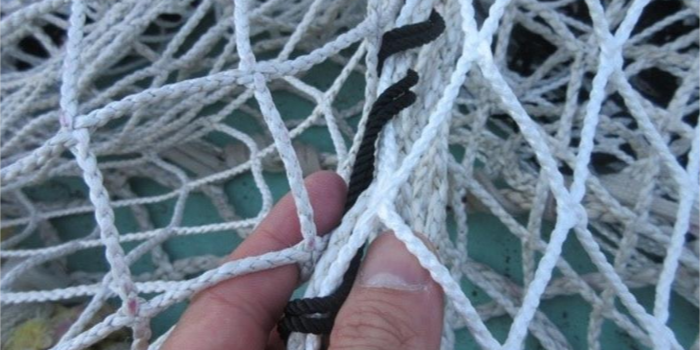
World’s 1st fishing net made with UHMWPE film
Teijin and Kinoshita Fishing Net jointly announced that they have developed the world's first high-performance knotless fishing net made with an ultra-high molecular weight polyethylene (UHMWPE) film.
Teijin and Kinoshita Fishing Net jointly announced that they have developed the world’s first high-performance knotless fishing net made with an ultra-high molecular weight polyethylene (UHMWPE) film. Kinoshita Fishing Net will begin selling MX-4 made with Teijin’s Endumax® UHMWPE film in early August and is targeting annual sales of 50 tons by 2025, including Endumax® fishing nets for purse seine net fishing and later for traps, fish farms and trawling.
Also read: Technical textiles for protection against thermal hazards EN 407-2004
Teijin continues to discover new industrial applications for Endumax®, such as ropes, bulletproof wear and lightweight containers for air cargo, as well as fishing nets, and expects to develop additional applications going forward.
MX-4 combines Teijin’s advanced Endumax® film and Kinoshita Fishing Net’s manufacturing technology implemented with world-leading net-knitting machines for knotless netting, made by crossing threads with each other for extra strength and abrasion resistance. In addition to Muketsu knotless netting made with twisted threads, Kinoshita Fishing Net also boasts the world’s only machines for making braided knotless nets, sold under the BM brand for purse seines, traps and fish farms.
Also read: Teijin to showcase advanced solutions
Endumax® is a 60µm-thick film offering high strength, high modulus and resistance to impact, abrasion, chemicals and sunlight. Advanced technologies are normally required to mass produce fish nets made with film, but Kinoshita Fishing Net’s proprietary technology enables Endumax® that has been cut to just several millimeters in width to be knit into highly functional MX-4 fishing net.
MX-4 is especially suitable for purse-seine nets for skipjack, tuna, horse mackerel and mackerel, which are used in harsh environments where durability and fast drainage are crucial. MX-4 does not shrink easily and is resistant to breakage due to abrasion even after hundreds of castings, so it can be used safely for long periods. It also improves work efficiency and cost efficiency by reducing needs for net reconditioning and tailoring. In addition, it reduces the frequency of net disposal and is more marine friendly. Furthermore, when MX-4 is pulled up from the sea, it immediately sheds water and becomes lighter, making it easier to work. It also stays clean.
Various types of fishing nets are used commercially depending on the fishing method, fish species and marine environment. In the case of purse-seine net fishing, where nets can become heavily loaded, over time the nets can shrink considerably, lose shape, become less efficient in enclosing fish, and require frequent repair or replacement.
Teijin aims to be a company that supports the society of the future by creating new value based on the changing times, providing solutions to realise a more prosperous and sustainable world. Kinoshita Fishing Net’s philosophy is be an essential enterprise that develops unique solutions by working directly with customers to understand their situations, requirements, goals and prospects. Going forward, the company will expand MX-4 applications for purse seine net fishing, and later for fish farms, traps and trawling, as a socially responsible enterprise that places top priority on evolving with distinction and sustainability.
Teijin is a technology-driven global group offering advanced solutions in the fields of environmental value; safety, security and disaster mitigation; and demographic change and increased health consciousness. Originally established as Japan’s first rayon manufacturer in 1918, Teijin has evolved into a unique enterprise encompassing three core business domains: high-performance materials including aramid, carbon fibers and composites, and also resin and plastic processing, films, polyester fibres and products converting; healthcare including pharmaceuticals and home healthcare equipment for bone/joint, respiratory and cardiovascular/metabolic diseases, nursing care and pre-symptomatic healthcare; and IT including B2B solutions for medical, corporate and public systems as well as packaged software and B2C online services for digital entertainment.
Kinoshita Fishing was established in 1933 as net plant specialising in net manufacturing and sales. Since its inception, the company has expanded around the manufacture and sale of materials for “foodâ€-based industries such as fishing and agriculture. Based on a company culture that places chief importance on the relationship between the manufacturing setting and the customer, Kinoshita has created a well-connected domestic and international network, especially throughout the fishing industry.


